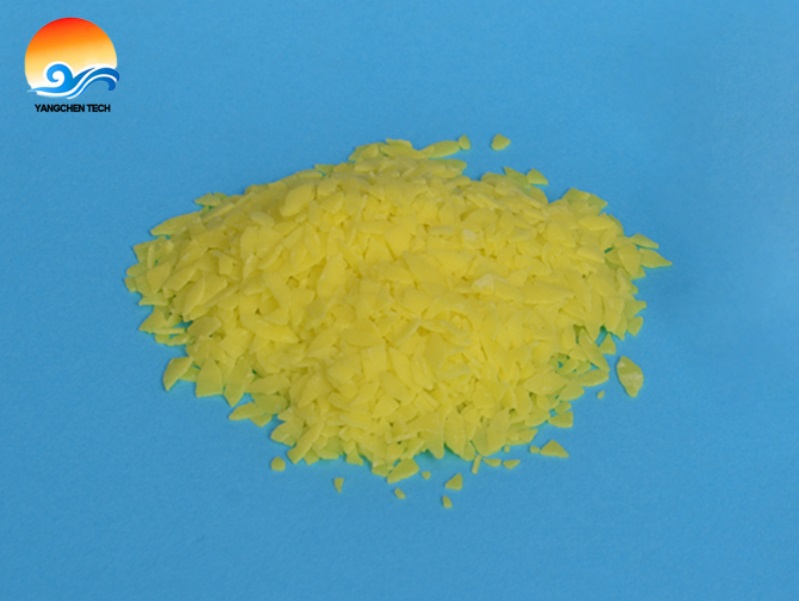HVA-2,N,N'-m-phenylene dimaleimide is a multifunctional rubber additive. Besides being widely used in the rubber industry as a vulcanizer, co-vulcanizer, and scorch retarder, it also plays a crucial role in adhesives, primarily due to its ability to significantly improve heat resistance and bond strength.
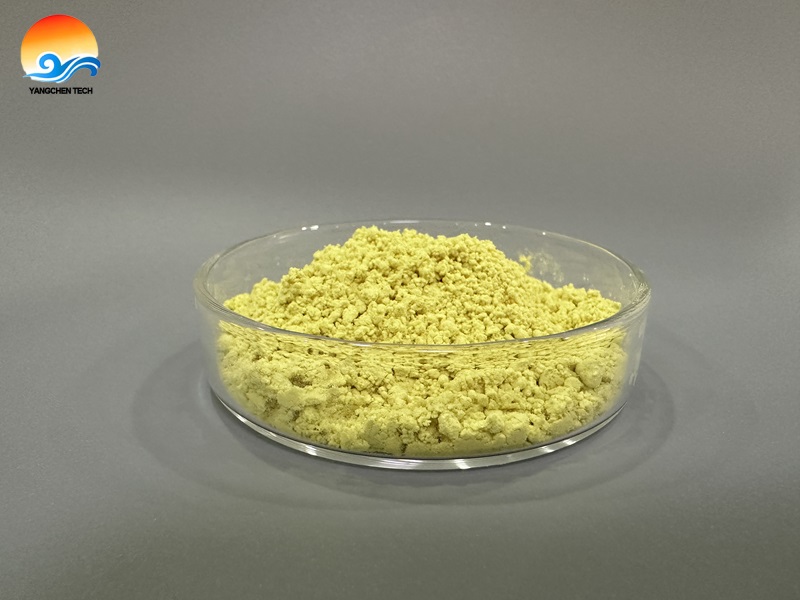
Certificate of Analysis
|
Product Name |
N,N'-m-phenylenedimaleimide(HA-8) |
|
|
Property |
Limits |
Results |
|
Form |
Free Flowing Powder |
Free Flowing Powder |
|
Color |
Yellow to light Brown |
Yellow |
|
Contamination |
None |
None |
|
Melting Range℃ |
≥195 |
201.8 |
|
Water % |
≤ 0.5 |
0.02 |
|
Ash % |
≤ 0.3 |
0.01 |
|
Oil % |
≤5 |
3.1 |
|
Acidity mgkoH/g |
≤5 |
1.1 |
|
Particle Size On 100 mesh % On 325 mesh % |
0.0Max 0.5Max |
0 0 |
Applications Specific Functions and Effects
Main Function As a heat-resistant modifier (resin monomer), it enhances the overall high-temperature resistance of the adhesive by participating in reactions.
Key Benefits:
1. Significantly Improves Heat Resistance: Enhances adhesive stability in high-temperature environments, preventing failure due to high temperatures.
2. Enhanced Bond Strength: Especially for difficult-to-bond materials such as metals.
Typical Dosage
The recommended addition level in adhesive formulations is generally 5-10 parts.
Applicable Systems For example, Anaerobic Adhesive.
Principle of Action and More Applications
HVA-2 molecules contain active double bonds that can undergo cross-linking reactions under heat or in the presence of an initiator, forming a stable network structure. This is why it can function both as a vulcanizing agent and as a heat-resistant modifier in adhesives.
In addition to its general use as a heat-resistant modifier, search results also mention HVA-2's applications in specific applications:
1.Metal Bonding: When used in high-end hot-melt paints and coatings, HVA-2 can improve adhesion to metals. This property is also suitable for adhesives requiring high-strength metal bonding.
2.Aerospace: Because HVA-2 is an excellent polymer heat-resistant additive, it is also used in heat-resistant materials in the aerospace industry, suggesting its potential application in specialty adhesives requiring extreme heat resistance.
Usage Guidelines and Precautions
When using HVA-2, there are several things to keep in mind:
1.Dosage: In adhesive formulations, the typical dosage is 5-10 parts. The optimal dosage should be determined through specific experiments.
2.Solubility: Understanding its solubility will help you select the appropriate solvent for pretreatment or dilution. HVA-2 is soluble in dioxane, tetrahydrofuran, and hot acetone, but insoluble in petroleum ether, chloroform, benzene, and water.
3.Storage Conditions: This product should be stored in a cool, dry, well-ventilated place, away from light and heat.
High-Tg Bismaleimide Resin Manufactured By Yangchen Tech
In the high-performance polymers, bismaleimide resin (BMI) stands out for its exceptional thermal stability, mechanical strength, and electrical properties. Yangchen Technology specializes in BMI (CAS: 13676-54-5) with a focus on one key performance metric: glass transition temperature (Tg). Our BMI resins boast Tg values exceeding 340°C, and custom formulations can reach temperatures exceeding 400°C.
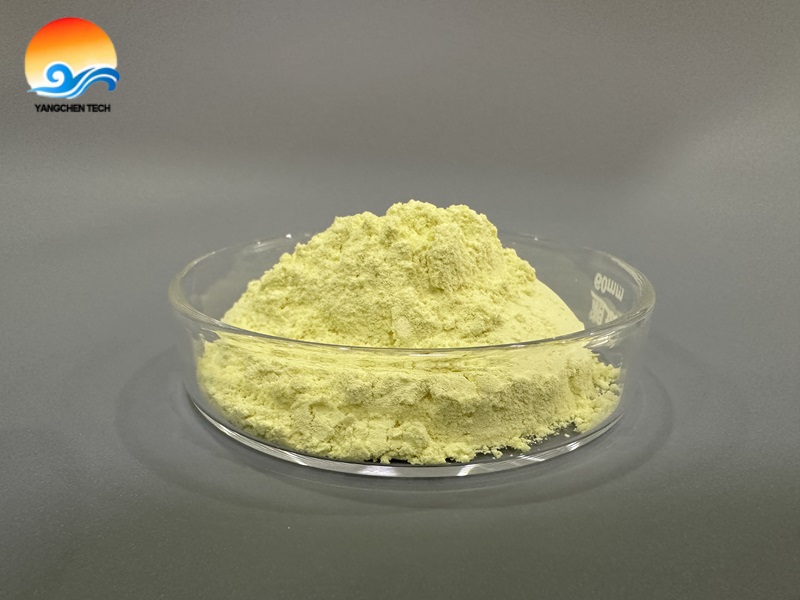
Why the Tg of Bismaleimide Resin is Important?
The glass transition temperature (Tg) is the point at which a polymer transitions from a hard solid to a softer, rubbery state. For applications in the aerospace, electronics, and automotive industries, a high Tg ensures:
- Dimensional stability under thermal stress.
- Mechanical properties (e.g., strength, modulus) maintained at elevated temperatures.
- Resistance to deformation during sustained high-temperature operation.
Standard epoxy resins typically have Tg values below 200°C, limiting their use in high-end applications. In contrast, our BMI resins achieve Tg values as high as 400°C through molecular design and compounding. For example, our N,N'-4,4'-diphenylmethane bismaleimide (CAS: 13676-54-5) exhibits a Tg of 340°C after curing for 10 hours at 280°C.
Technical Indicators
| Appearance | Melting point | Acid value |
Volatile |
Specification | Gel time 200℃ | Toluene Solubility |
| Yellow powder | 150-160℃ |
≤1mgKOH/g |
≤1% |
>98% |
<300 S |
Totally soluble or a small amount of insoluble matter, transparent solution |
Key Advantages of Our High-Tg BMI Resins
1. Excellent Thermal Performance
Tg range: 250°C to >400°C, customizable upon request.
Thermal decomposition temperature (Td) as high as 500°C.
Low coefficient of thermal expansion (CTU: 36–40 ppm/°C), minimizing warping and cracking.
2. Enhanced Processability
Low melt viscosity (e.g., 474–51 mPa·s in the 148–180°C range) allows for easy molding, impregnation, or coating.
Wide processing window for composites, adhesives, and encapsulation materials.
3. Excellent Mechanical and Electrical Properties
High storage modulus (e.g., below 3.2 GPa at Tg), ideal for structural components.
Excellent dielectric properties, suitable for electronic insulation.
Practical Applications of High-Tg BMI Resins
Our resins are designed for the following industries, where failure is unacceptable:
Aerospace: Composite matrices for engine components, nose covers, and fuselage structures.
Electronics: Integrated circuit substrates, high-frequency circuit boards, and insulation coatings.
Industrial: High-temperature adhesives, wear-resistant materials, and protective coatings.
Yangchen Technology's Solutions: Tailoring Tg to Your Needs
We understand that different applications have varying Tg requirements. Here's how we provide customized solutions:
1. Formulation Optimization
By adjusting monomer ratios (e.g., DDM-BMI/EBA-BMI blends), we precisely control crosslink density, thereby increasing Tg without compromising processing performance.
2. Cure Optimization Guidance
We provide technical support on curing parameters (time/temperature) to maximize Tg. For example, post-curing at 280°C can increase Tg by 10-15%.
3. Compliance with Industry Standards
Our BMI resins meet stringent thermal stability and safety specifications, ensuring reliability in critical applications.
Bismaleimide series products manufactured by Yangchen Tech
| Product Brand | Product Name | CAS Number |
| BMI-200(Click here) | Phenylmethane maleimide | 67784-74-1 |
| BMI-400(Click here) | Bisphenol A diphenyl ether bismaleimide | 79922-55-7 |
| BMI-500(Click here) | 3,3-dimethyl-5,5-diethyl-4,4-diphenylmethanebismaleimide | 105391-33-1 |
| BMI-600(Click here) | BIS(4-MALEIMIDOPHENYL)SULFONE | 13102-25-5 |
| BMI-800(Click here) | 4-methyl-1,3-phenylenebismaleimide | 6422-83-9 |
Partner with Yangchen Technology for superior BMI resins
At Yangchen Technology, we combine over 20 years of high-performance polymer expertise with a customer-centric approach. Whether you require a BMI resin with a Tg of 300°C or >400°C, we offer:
- Sample testing to verify performance in your application.
- End-to-end support from formulation to manufacturing.
For more details, please visit our website or contact Yangchen Technology's technical team.
Unlocking the highest performance of engineering plastics with advanced thermal stabilization technology
Exploring Heat-Resistant ABS
Acrylonitrile-butadiene-styrene copolymer (ABS) is a widely used engineering plastic, prized for its exceptional toughness, rigidity, and ease of processing. However, standard ABS suffers from a significant limitation: its heat deflection temperature (HDT), typically ranging from 85°C to 95°C, restricting its use in high-temperature applications such as automotive parts, electronic housings, and industrial equipment. To overcome this shortcoming, manufacturers are constantly searching for effective thermal modifiers that balance performance, cost, and processing efficiency. Among these solutions, N-phenylmaleimide (N-PMI) has emerged as a leading additive for thermal enhancement of ABS. This article will explore the science behind N-PMI's effectiveness, aiming to provide high-performance N-PMI solutions for industries worldwide.
1. The Science Behind N-PMI: How It Improves ABS's Heat Resistance
N-PMI is a rigid cyclic monomer with a molecular structure consisting of 1,2-disubstituted vinyl groups embedded in a five-membered ring. When copolymerized with ABS or blended as an additive, it acts as a "molecular scaffold," restricting the mobility of the polymer chains. This restriction raises the glass transition temperature (Tg) of ABS, directly improving its heat resistance without compromising its mechanical integrity. Key mechanisms include:
- Enhanced Chain Rigidity: The phenyl and imide groups in N-PMI introduce steric hindrance, reducing chain rotation and improving thermal stability.
- Synergistic Copolymerization: N-PMI binds to the ABS polymer during the synthesis process, forming covalent bonds that stabilize the matrix and prevent thermal degradation. Research has shown that adding 10% N-PMI to ABS can produce ultra-high-heat-resistant ABS with an HDT of 125-130°C, a 30-40°C improvement over unmodified ABS.
2. Why N-PMI Outperforms Other Thermal Modifiers
While other additives (such as glass fiber, mineral fillers, or other imides) can improve heat resistance, they often sacrifice processability, impact strength, or surface finish. N-PMI offers the following unique advantages:
- Balanced Performance: It simultaneously enhances heat resistance, tensile strength, and melt processing.
- Low-Dosage Efficiency: Even a 1% addition can increase the HDT by 2°C, enabling precise calibration for cost-sensitive applications.
- Compatibility with Additives: N-PMI works synergistically with stabilizers, pigments, and flame retardants, making it an ideal choice for multifunctional composites. In contrast, fillers such as talc or silica can reduce toughness, while other thermal stabilizers typically require higher addition levels, increasing viscosity and complicating processing.
Basic Information
|
Property |
Description |
|
Chemical Name |
N-Phenylmaleimide |
|
Synonyms |
NPMI, Monomaleimide |
|
CAS Number |
941-69-5 |
|
Purity |
≥99% |
|
Appearance |
Pale yellow crystalline powder |
|
Manufacturer |
Shaanxi Yangchen New Material Technology Co., Ltd |
Key Properties of N-Phenylmaleimide
|
Property |
Description |
|
Thermal Stability |
Decomposition temp. >300°C |
|
Glass Transition Temp. (Tg) |
Significantly increases Tg of ABS and other resins |
|
Compatibility |
Compatible with styrenics (e.g. ABS, SAN), epoxy resins, and engineering plastics |
|
Solubility |
Dissolves in acetone, DMF, THF, etc. |
3. Yangchen Technology's Leadership in N-PMI Innovation
As a pioneer in fine chemicals and polymer additives, Yangchen Technology leads the way in N-PMI technology:
A. Advanced Synthesis and Purification Technologies
Yangchen Technology utilizes a proprietary catalytic system and a closed-loop solvent recovery process to produce N-PMI with high purity (>99%) and low coloration. Our approach removes impurities that could accelerate polymer degradation, ensuring optimal performance in ABS formulations.
B. Custom Copolymer Design
We develop customized N-PMI-based copolymers, such as poly(N-phenylmaleimide-styrene-acrylonitrile-α-methylstyrene). These terpolymers exhibit high Tg values of 142.6°C, making them suitable for use as standalone high-temperature resins or as modifiers for ABS/PVC blends.
C. Scalable and Sustainable Production
Our facilities utilize continuous flow reactors and energy-efficient distillation to achieve high yields (≥95%) while minimizing waste. This scalability ensures reliable supply to our global customers, from pilot batches to industrial-scale orders.
4. Practical Applications: Advantages of N-PMI-Enhanced ABS
The thermal stability imparted by Yangchen Technology's N-PMI opens the door to demanding applications in the following industries:
- Automotive: Under-the-hood components, connector housings, and interior trim.
- Electronics: LED housings, power tool housings, and 3D printing consumables.
- Consumer Goods: Kitchen appliances, sanitary ware, and outdoor equipment.
ABS modified with Yangchen Technology's N-PMI retained >90% of its impact strength after 1000 hours at 110°C, >50% higher than conventional ABS.
Any questions,feel free to contact us!
Adjustable Plastic Pedestal: Comprehensive Guide to Features, Applications, Installation & Advantages
Adjustable Plastic Pedestal, commonly known as "Adjustable Base" or "Adjustable Elevated Base" abroad, has been widely used in Europe and America since the 1980s and is now an innovative building product.
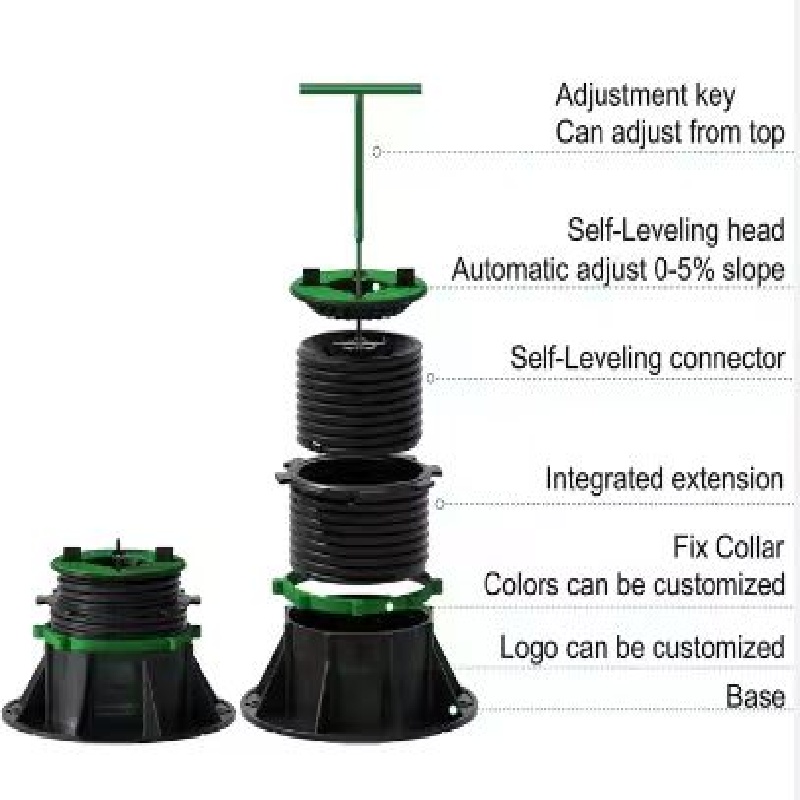
Tools/Materials
- Material: High-density polypropylene (PP)
- Core Features: High strength, aging resistance, long service life, strong weather resistance, unaffected by cold, heat, moisture, with a service life of over 25 years.
Application Scenarios
Suitable for wooden terrace construction, flooring installation, landscape engineering, water feature creation, deck docks, garden rooftops, still water surfaces, fountains (jet fountains, dry fountains), anti-corrosion wood installation, grid permeable board overhead, sky gardens, atrium landscapes & terraces, interactive water dance fountains, roof insulation, etc.
Components & Functions
1. Support Head: Fixed on the base or connecting pipe, compatible with keel brackets and various floors, supporting 0-5% slope drainage.
2. Connecting Pipe: Internal and external thread structure for free height adjustment; scale labels ensure safety and stability.
3. Base Plate: Can be positioned/fixed on any substrate, with multiple fixing holes for anchoring screws/bolts, ensuring safety and stability.
4. Spacer Strip: Thickness 2/3.5/5/8/10mm, breakable, adjusts stone gaps (conventional 5mm), facilitates drainage and enhances aesthetics.
5. Gasket: Thickness 1/2mm, cuttable, adjusts uneven stone thickness to ensure flatness and buffers impact between stones and pedestals.
6. Keel Slot: Width 40mm/50mm/60mm/80mm, suitable for different keel needs.
7. Fixing Ring: Reversely locks the pedestal, improves load-bearing capacity, especially effective in sandy environments.
8. Core Advantages: Fully adjustable height, load-bearing over 2 tons, 100% recyclable modified PP material, compatible with marble, granite, wood decks, tiles, drainage grilles, etc.; easy assembly, strong durability, convenient pipeline installation/maintenance, good insulation, no frozen layer issues.
Usage Advantages
- Excellent hiding of pipes and equipment;
- Significantly reduces building load, substantially lowering structural costs;
- Easy leveling and installation;
- Rapid drainage;
- Good thermal insulation;
- Effectively solves water stains and efflorescence;
- Excellent sound insulation;
- Fast installation speed;
- Environmentally friendly;
- Applicable to any floor material;
- Adapts to sudden design changes;
- Construction unaffected by weather;
- Reduces long-term maintenance costs;
- Lowers cleaning, replacement and major renovation expenses;
- Facilitates pipeline configuration and maintenance.
Installation Methods & Notes
1. Installation Method: Install supports corresponding to each floor slab (4 for the first slab, 2 for subsequent slabs) and lay them one by one until complete; Do NOT fix all supports first before laying stone floors (incorrect).
2. Fixing Method: Pour the pedestal base on the ground with cement mortar to avoid damaging the waterproof layer.
3. Installation Notes: ① The pedestal bears load via threads; ensure at least 3-4 threads engage when adjusting height, avoiding uneven tightness; ② After adjusting height, tighten the green fixing ring downward in the reverse direction to prevent wobbling.
In the dry-mix mortar industry, the performance of redispersible polymer powder (RDP) directly determines the bonding strength and flexibility of tile adhesives, exterior wall putties, and thermal insulation mortars. As the source of RDP production, the physicochemical properties of VAE emulsions form the cornerstone of all these properties. Today, we will delve into two specialized VAE emulsions designed specifically for RDP production—DiverSol 628 (VAE CW40-758) and DiverSol 688 (VAE CW40-718).

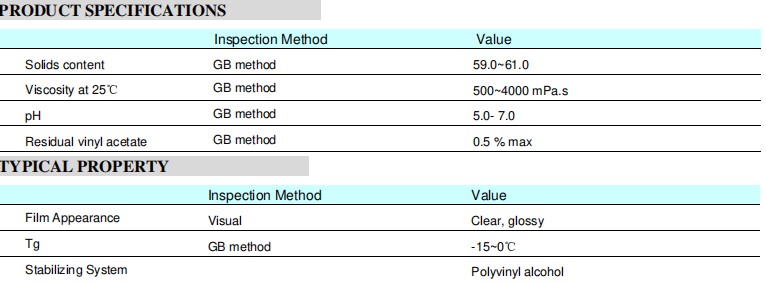
1. Balance between High Solids Content and Rheological Properties
For RDP (polymer powder) manufacturers, spray drying is the most energy-intensive process. The solids content of the emulsion raw materials directly affects production efficiency and energy costs. DiverSol 628 and DiverSol 688 demonstrate extremely high industrial economics in this regard.
In the VAE emulsion field, a solids content of around 60% is considered high. This means that the amount of water that needs to be evaporated during the spray drying process is significantly reduced. Compared to conventional 55% solids content emulsions, using the DiverSol series not only significantly reduces heat consumption but also substantially increases the unit output of spray towers.
Besides solids content, viscosity is crucial for atomization performance. DiverSol 628/688 have a viscosity range of 500 ~ 4000 mPa·s (25℃). This wide viscosity range, combined with its excellent flow properties, provides powder manufacturers with a wide process window:
- Good atomization: Appropriately low viscosity helps the emulsion form tiny droplets at the nozzle, resulting in more uniform particle size distribution in the dried powder, and better flowability after blending.
- Shear stability: Under high-speed pumping and spray shearing, the emulsion remains stable and is less prone to emulsion breakage and nozzle clogging.
Furthermore, both products use polyvinyl alcohol (PVA) as a protective colloid system. This system is standard in RDP production because polyvinyl alcohol not only stabilizes the emulsion but also acts as a protective film during the redispersibility of the adhesive powder, preventing the powder particles from clumping in water and ensuring rapid dispersion of the final dry mortar after water addition.
2. Differentiated Formulation Strategy Based on Tg Value
Although DiverSol 628 and 688 are highly consistent in their basic physical properties (appearance, solid content, viscosity, pH), they take two completely different technical directions in their core thermal performance indicator—glass transition temperature (Tg), targeting "rigid" and "flexible" applications respectively.
2.1 DiverSol 628: High Tg Leads to Rigidity and High Strength
♣ Tg Range: 10 ~ 20°C
♣ Technical Characteristics: A Tg higher than room temperature means that the movement of polymer molecular chains is restricted after film formation, resulting in a film with higher hardness and cohesiveness.
♣ Application Advantages: RDP produced using 628 is more suitable for applications requiring high bond strength and surface hardness. For example:
- Tile adhesive: Provides strong tensile strength, preventing heavy tiles from slipping.
- Floor mortar and self-leveling compound: High Tg helps improve the abrasion resistance and hardness of the floor surface.
- Gypsum-based applications: Enhances the strength of gypsum products.
2.2 DiverSol 688: Low Tg provides flexibility and crack resistance.
♣ Tg range: -15 ~ 0℃
♣ Technical characteristics: Significantly lower Tg than room temperature, the film is in a highly elastic state after formation, the film is soft, and has excellent elongation.
♣ Application advantages: RDP produced using 688 has its core selling points in flexibility and weather resistance. It effectively absorbs the deformation stress of the substrate, suitable for:
- External wall insulation systems: Prevents cracking of the insulation layer in environments with large temperature variations.
- Flexible putty: Provides excellent crack resistance, adapting to minor vibrations or settlement of the wall.
- Repair mortar: Provides necessary bridging ability when repairing old and cracked substrates.
3. Industrial Compatibility and Green Environmental Protection
In actual industrial production, VAE emulsions not only need excellent performance but also must possess good "compatibility," meaning they must be compatible with other raw materials.
3.1 Broad Chemical Compatibility
DiverSol 628/688 were formulated with the complexity of downstream applications in mind. These two emulsions typically exhibit good compatibility with various thickeners, plasticizers, solvents, and fillers. This is crucial for RDP manufacturers, as anti-caking agents or other modifying agents are often added to the emulsion before spray drying. Good compatibility ensures the homogeneity of the mixture, preventing stratification or flocculation.
3.2 Environmental Protection and Aging Resistance
With increasingly stringent GB standards for the environmental protection of building materials, the environmental properties of raw materials have become a critical indicator.
- Plasticizer-Free Design: Both products are formulated without plasticizers. This means that the film-forming flexibility of the emulsion comes from the internal plasticizing effect of the ethylene monomer, rather than from added small-molecule plasticizers. This not only prevents later-stage brittleness caused by plasticizer migration but also ensures excellent aging resistance.
- Low Residual Monomer: The residual vinyl acetate monomer content is strictly controlled below 0.5%, making it an environmentally friendly product.
3.3 Storage and Handling Guidelines
While the product boasts excellent performance, proper handling is equally important. Due to the presence of trace monomers, it is recommended to handle the product in a well-ventilated environment and wear protective equipment. Storage temperature should be controlled between 5°C and 40°C; freezing is strictly prohibited. It is particularly important to note that if the product has undergone long-distance transportation or long-term storage (shelf life 6 months), it is recommended to filter and stir before use to eliminate any potential lumps or crusts.
Website: www.elephchem.com
Whatsapp: (+)86 13851435272
E-mail: admin@elephchem.com
In the field of building waterproofing, polymer cement waterproof coatings have always been a market favorite due to their environmental friendliness, high film strength, and good compatibility with damp substrates. As the core raw material of JS coatings, the performance of the polymer emulsion directly determines the success or failure of the final waterproof layer. Today, we will delve into DiverSol 779P (VAE CW40-705) and DiverSol 777 (VAE CW40-705). By interpreting the data of these two products, which conform to GB/T 23445-2009 Type II standard, we will analyze the key technical aspects of high-performance waterproof emulsions in practical applications.
1. Technical Characteristics and Performance Highlights of Two Special VAE Emulsion
Both DiverSol 777 and 779P are plasticizer-free VAE Emulsion (Vinyl Acetate–ethylene Copolymer Emulsion) , presenting as a milky white water-based system. They maintain relatively consistent key indicators such as solid content, viscosity, pH, and glass transition temperature (Tg), which helps to maintain stable performance in different application scenarios.
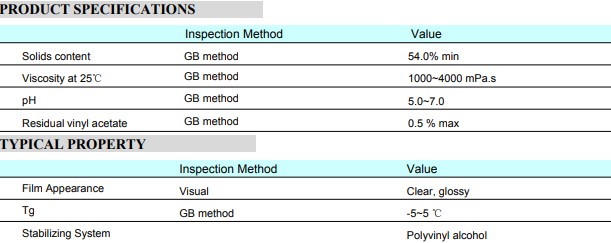
♠ Industry Significance in Performance:
- Low Tg for Flexibility: Suitable for Type II waterproof coatings requiring low-temperature flexibility and crack resistance; the film exhibits good elongation after drying, adapting to slight substrate displacement and temperature changes.
- Excellent Compatibility with Cement Systems: The PVA protective colloid improves the dispersibility of the emulsion when mixed with cement and fillers; significantly improves the sag resistance and thixotropic properties of cement paste.
- Plasticizer-Free Formulation: Reduces VOC emissions and enhances environmental friendliness; more stable in the formulation, preventing performance degradation due to migration.
- Adaptability to Wet Environments: Forms a film on damp, cold substrates without chalking or early cracking.
2. Application Logic and Formulation Synergy in Waterproof Building Coatings
2.1 Mechanism of Action in Waterproof Coating Systems
♣ VAE emulsions play three roles in cement-based waterproof coatings:
- Providing flexibility: filling the "brittleness gap" of the cement system;
- Improving water resistance: forming a continuous polymer film in the pores after cement hydration;
- Promoting workability: improving thixotropy, reducing sagging, and improving the smoothness of application.
The low Tg characteristics of DiverSol 777 and 779P enable the polymer phase to form a continuous film structure at room temperature or even low temperature, thereby effectively improving the coating density. It forms an interpenetrating network (IPN) structure with the cement hydrate, enhancing adhesion and crack resistance, which are fundamental properties that Type II waterproof coatings must meet.
2.2 Key Performance Improvement Points in Waterproofing Systems
(1) Improved Flexibility and Crack Resistance
The addition rate of the emulsion is usually 10–20% of the total mass of the system. The DiverSol series can achieve the following within this range:
- Increased tensile strength
- Increased elongation
- Buffering ability for mortar shrinkage cracks
(2) Anti-sagging and workability
779P emphasizes "good anti-sagging performance" in its description. Its thixotropy is suitable for:
- Facade construction
- Multi-corner structures such as bathrooms
- Stability control of thick coating operations
(3) Durability and water resistance
The polyvinyl alcohol protective colloid system after film formation can make the emulsion evenly distributed in the cement pores:
- Reduce water absorption
- Improve freeze-thaw cycle stability
- Delay the alkaline erosion of cement paste
(4) Strong substrate adaptability
Both emulsions can be applied under "low temperature or high humidity conditions", especially suitable for:
- Rainy season construction areas
- Underground structures
- Brick and concrete building bases that are prone to dampness
3. Engineering value, storage and transportation and production operation points
3.1 Engineering value manifestation
In building engineering applications, waterproofing systems usually face challenges such as diverse substrates, complex construction environments and high durability requirements. The selection of a suitable VAE emulsion not only affects product test indicators but also long-term operational stability.
The value of DiverSol 777 and 779P to engineering projects is mainly reflected in:
(1) Improved overall construction efficiency
- Good thixotropy, easier application, and reduced rework
- Strong adaptability to wet substrates, eliminating the need for prolonged drying of the substrate
(2) Effectively extends the service life of the waterproofing system
- The continuous polymer phase reduces the path of moisture intrusion
- Strong crack resistance, especially suitable for areas with slight structural movement, such as bathroom corners and roof panel joints
(3) Wide range of applications
- Waterproofing for bathrooms, kitchens, and balconies\Basement and foundation protection layers
- Roof coatings
- Flexible waterproofing primers for interior and exterior walls
- Premixed waterproofing slurry for engineering projects
(4) Compliant with environmental trends
- Plasticizer-free, water-based, and low-residue, helping the product pass environmental building material certification or meet VOC requirements
3.2 Storage Specifications
(1) Storage Environment and Shelf Life
- Temperature Control: The emulsion must be stored in a sheltered area and must not be frozen. Storage temperature should be strictly controlled between 5°C and 40°C. Once VAE emulsions freeze, they are usually irreversible after demulsification, resulting in direct economic losses.
- Shelf Life Management: Under suitable conditions and in their original, unopened packaging, DiverSol 779P and 777 have a minimum shelf life of 6 months. It is recommended that factories implement a "first-in, first-out" (FIFO) inventory management principle.
(2) Pretreatment and Usage Precautions
- Filtration and Stirring: During transportation and storage, soft lumps or a skin may form on the surface of the emulsion, a common physical phenomenon in polymer dispersions. Therefore, filtration is strongly recommended before use. Especially if the product has been stored for a long time, thorough stirring is essential before use to ensure homogeneity.
- Preservative Treatment: Preservatives are added to the product at the factory to prevent microbial contamination. However, once the container is opened or transferred to another storage tank, the original preservative system may be insufficient to resist new microbial attacks. If the product cannot be used immediately, the user must take appropriate precautions (such as sealing for storage) or add a suitable preservative after transfer.
(3) Safety Precautions
- Although the DiverSol series is considered safe for its intended use, as a chemical feedstock, it contains trace amounts of residual vinyl acetate monomer (controlled below 0.5%). Therefore, adequate ventilation should be maintained in the operating area.
- Operators should wear protective clothing, gloves, and goggles. In case of skin or eye splashes, rinse immediately with water.
Website: www.elephchem.com
Whatsapp: (+)86 13851435272
E-mail: admin@elephchem.com
Blow grade TPU except for must with appropriate crystallization speed and appropriate melt index, another important requirement is the control of the fisheye on the blow product. Preventing TPU blow products from producing fisheye not only must control the blow molding processing, but also control the physical impurities and hyperpolymer during the process of TPU synthesis and manufacturing.
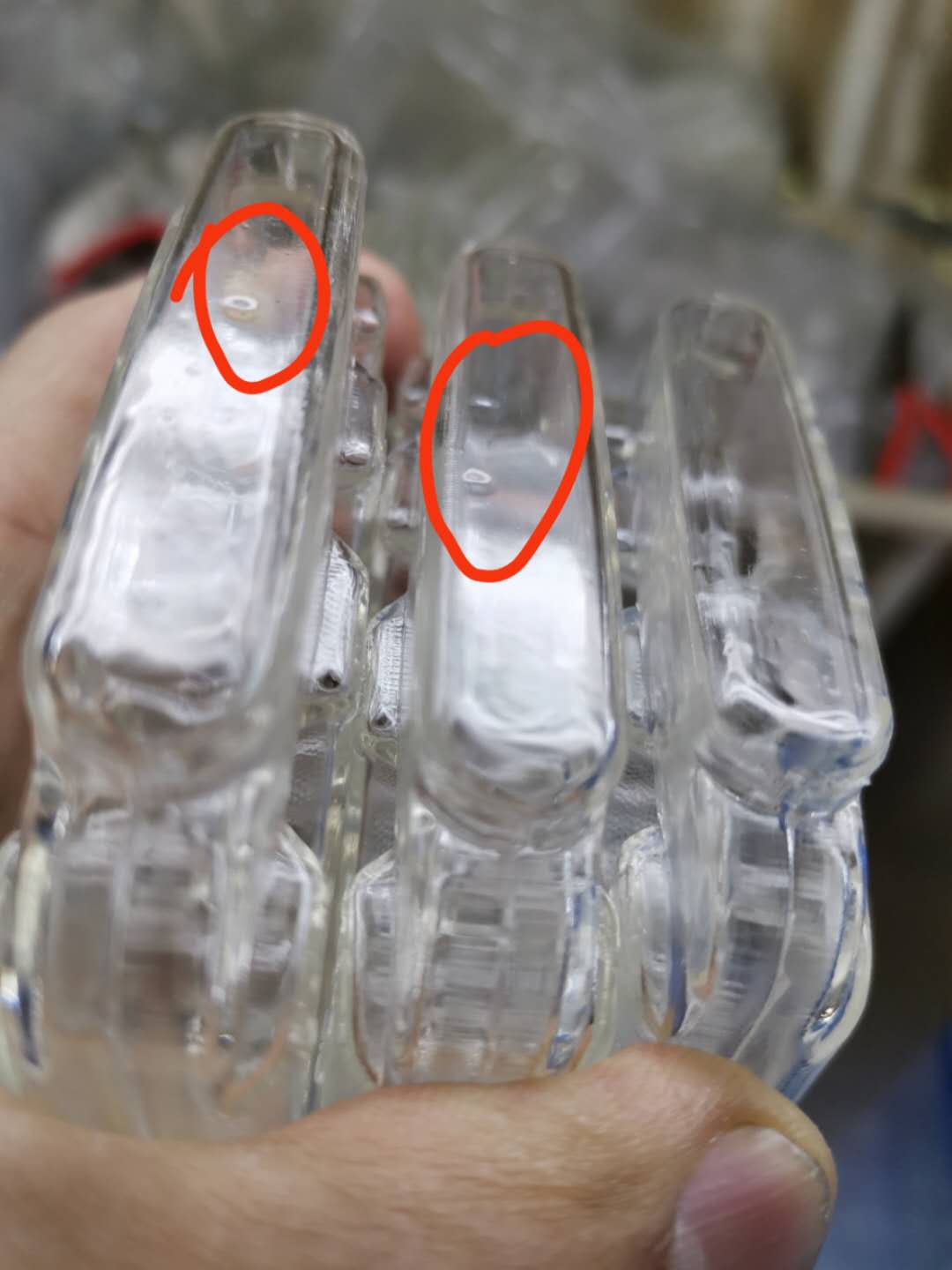
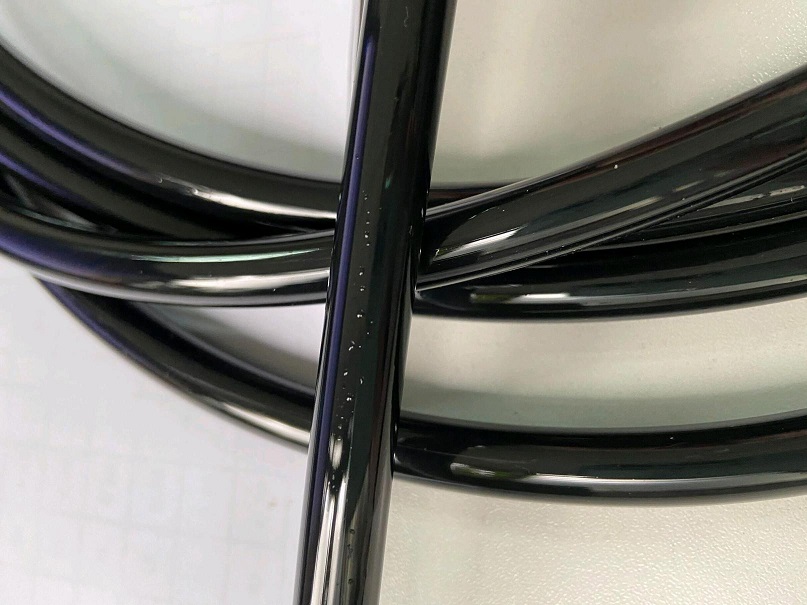
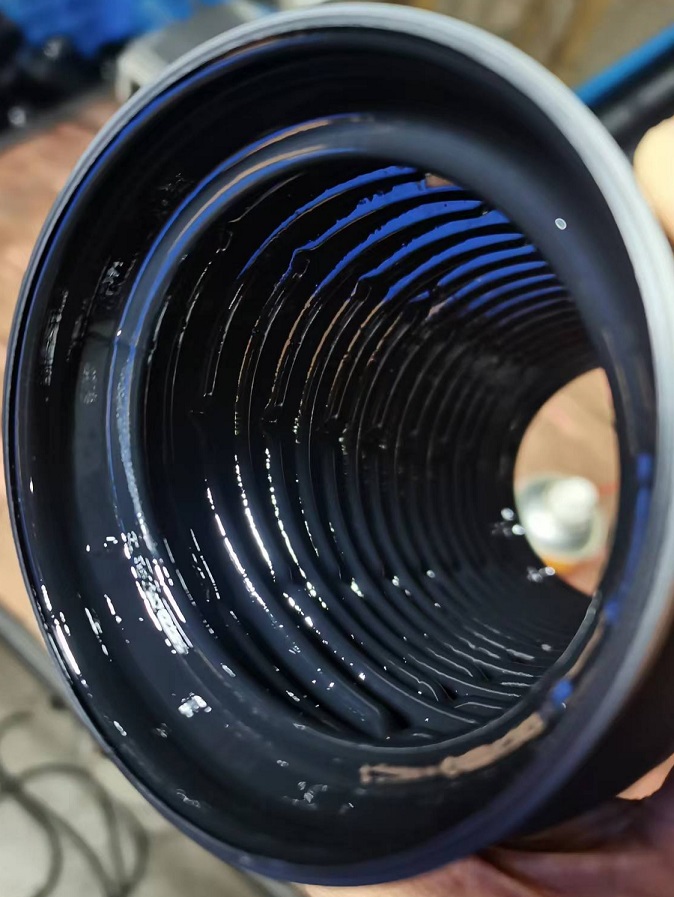
Koslen blow grade B-795AH10 and E-390AH are features with high melt stability and short cycle times. These blow grades deliver what you need from both a blow processing and performance perspective. They are popular choice for thick- and thin-wall blow parts and blow films such as auto suspension components, air sole, air bladder and blow film.
Automotive suspension parts which withstands continual vibration and debris day by day, the material for it must be capable of delivering high resistance to dynamic stress, abrasion, and grease. Polyether grade E-390AH perfectly cater these requirements.
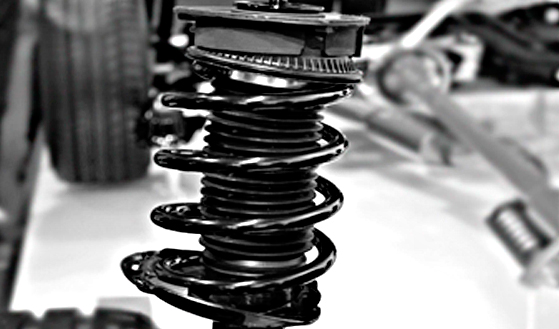

Air sole which withstands daily wearing, the material for it must be capable of delivering high resistance to dynamic stress, abrasion, scratch plus low weight, comfortable fit. TPU grade B-795AH10 perfectly cater these requirements.
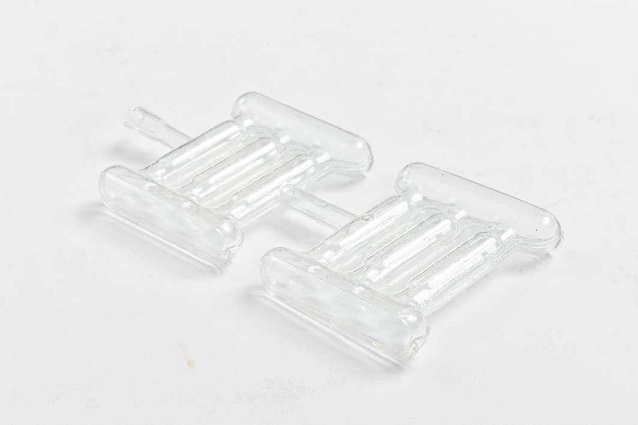
TPU air bladder be widely used in shock-absorbent seating
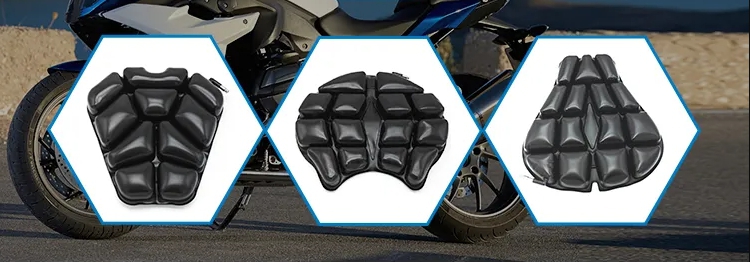
TPU blow film be widely used to producing shoe materials, waterproof and moisture-permeable clothing fabrics, medical and defense supplies, weapon packaging, tents, sports and leisure equipment, sanitary napkins, toys, civilian daily necessities packaging, etc.
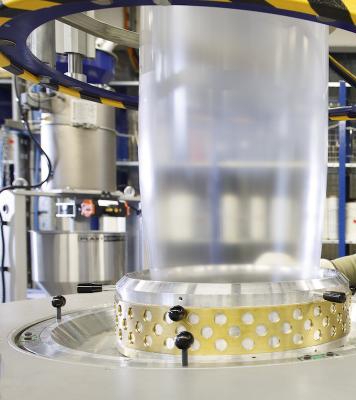
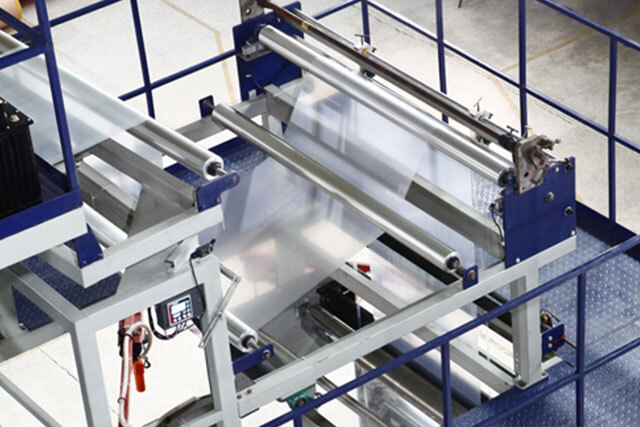
CHINAPLAS 2023 the 35th international exhibition on plastics and rubber industries is the world's leading plastics and rubber trade fair and its significance is surpassed only by K Fair
CHINAPLAS 2023 will reach to its biggest scale after corona virus epidemic. Around 3,900 exhibitors from over 40 countries and regions will present products and solutions covering machinery&equipment and raw material&auxiliaries industry to an audience of industry professionals. 18 theme zones facilitate successful sourcing of buyers.
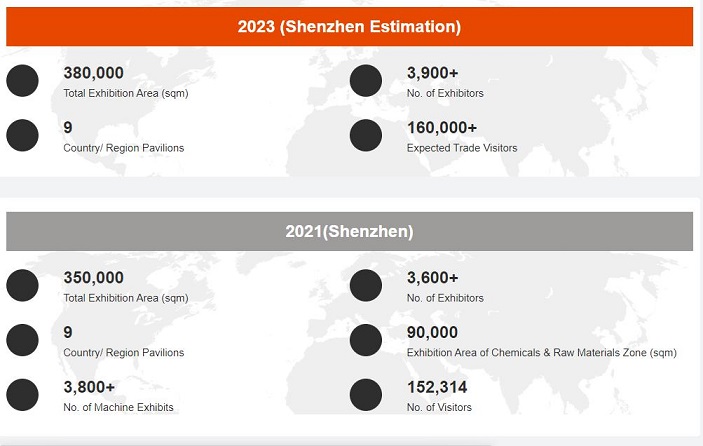
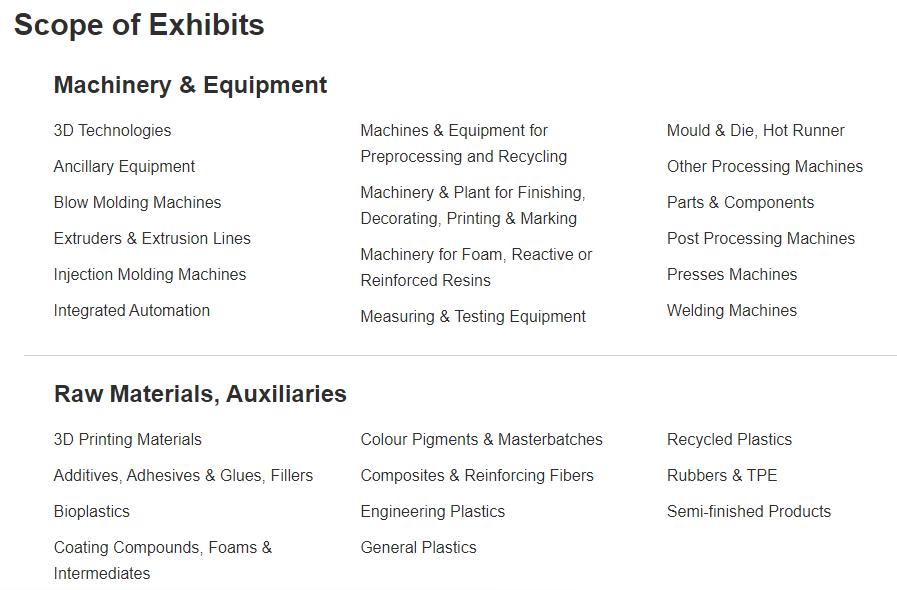
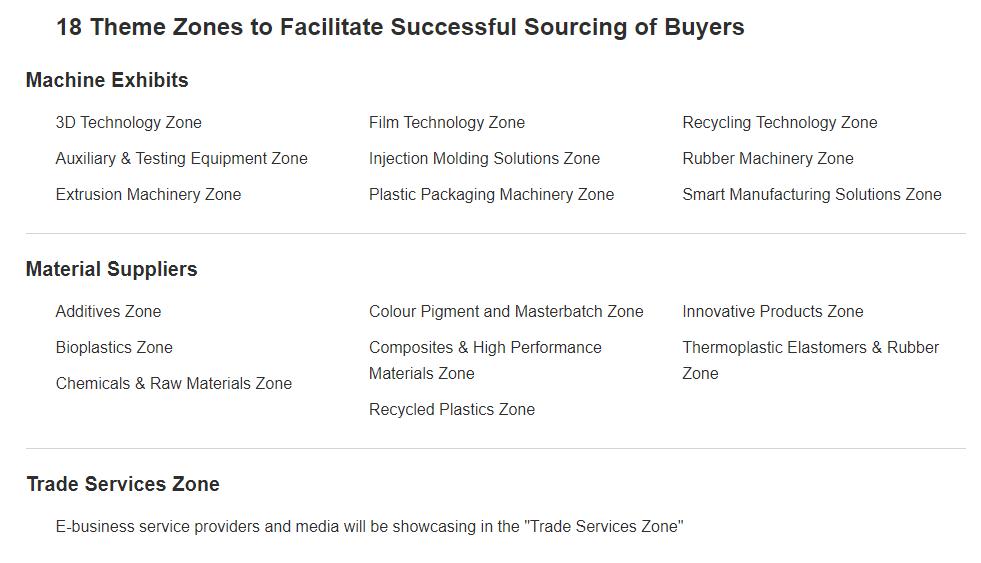
The online CPS+ eMarketplace provides precise and quality business matching service

This online forum will focus on the development trends, explore opportunities and challenges in the context of plastic recycling industry, as well as the application mechanisms. Representatives from various sectors will share best practices in shifting towards greater plastics circularity.
www.Chinaplas0nline.com/CPS23/ApplicationOnlineForum
Below Venue Layout Plan for your reference
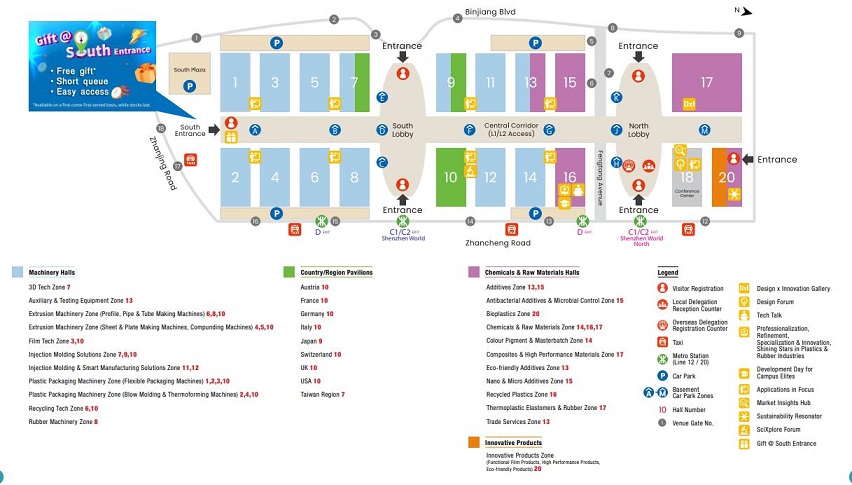
Techniques for processing TPU: injection molding, extrusion, calendering and blow molding
TPU can be processed by a variety of techniques including injection molding, extrusion, blow molding and calendering.
Injection molding is by far the most important technique for processing TPU material. TPU are easily molded into shapes such as shoe sole, wheels, electronic parts, seals, toys, gaskets, orthotics as so on.
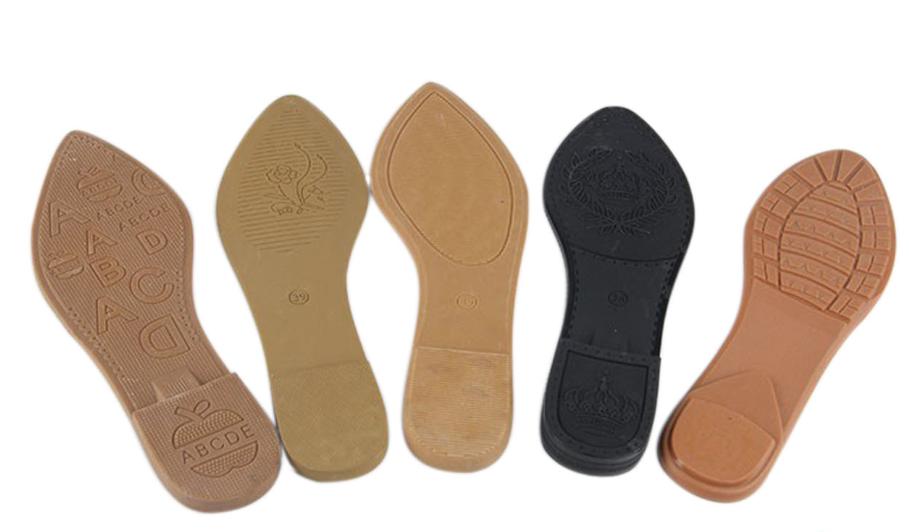
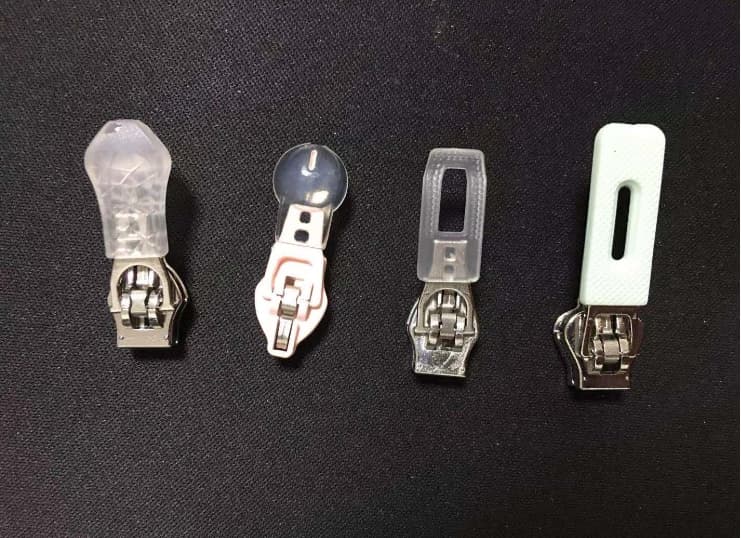
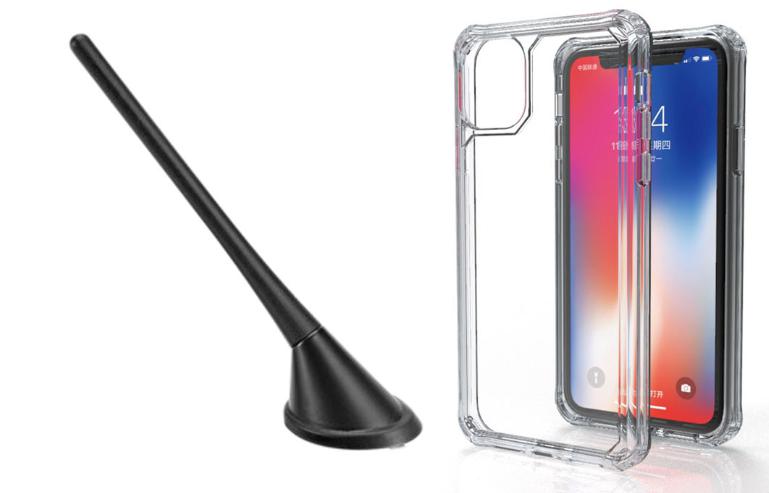
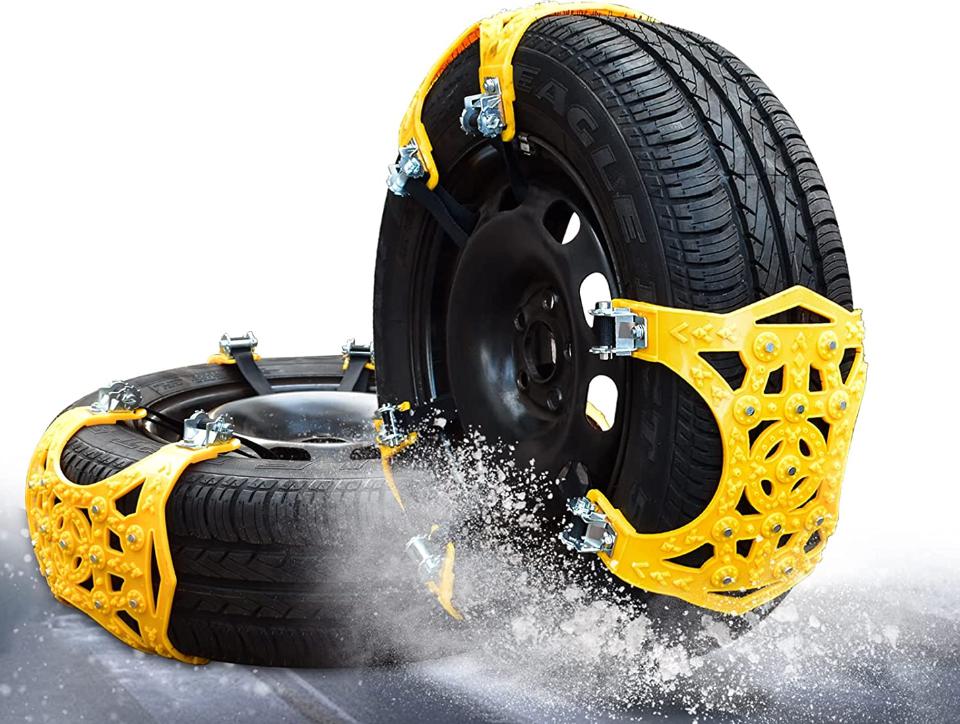
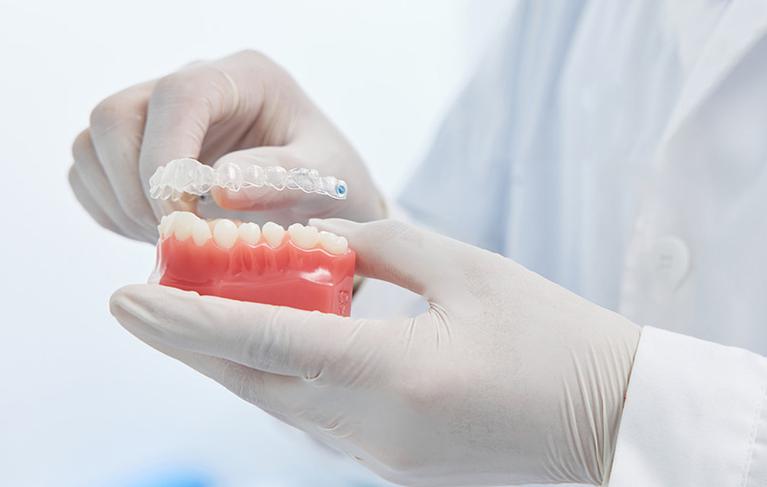
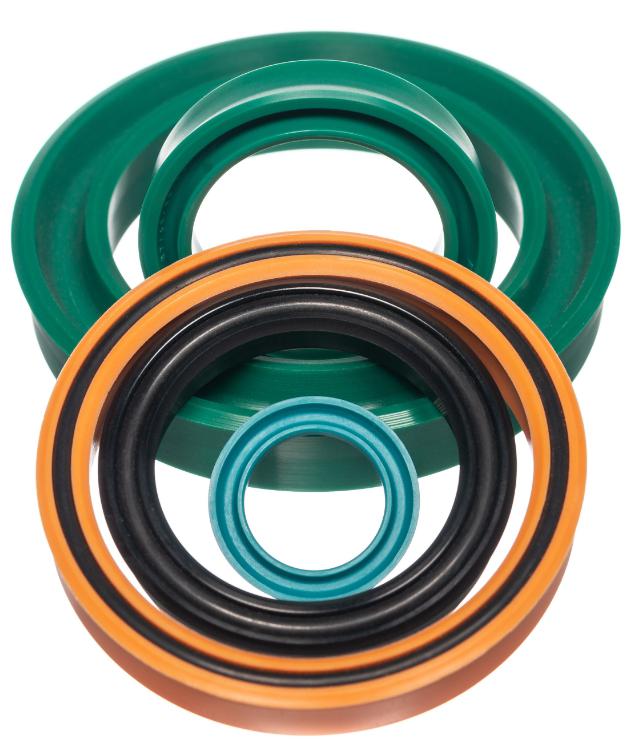
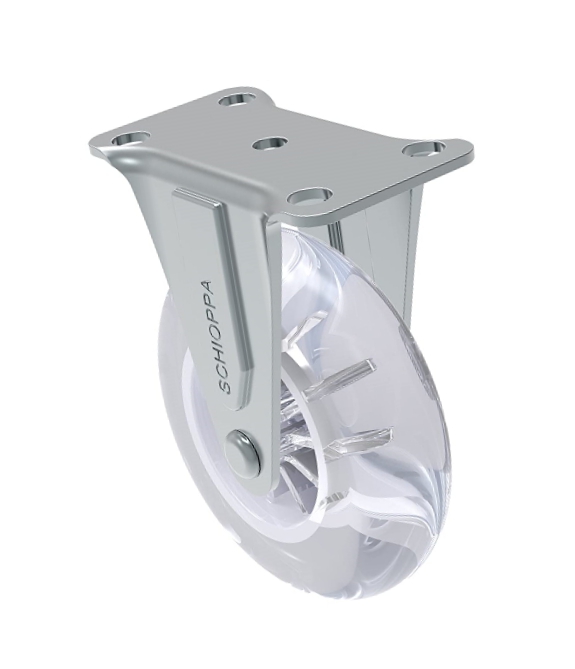
TPU are easily extruded into shapes such as tubing, wire & cable. Unlike injection molding, extrusion can be used to produce a very good surface finish. For best results, use extrusion grade TPU materials
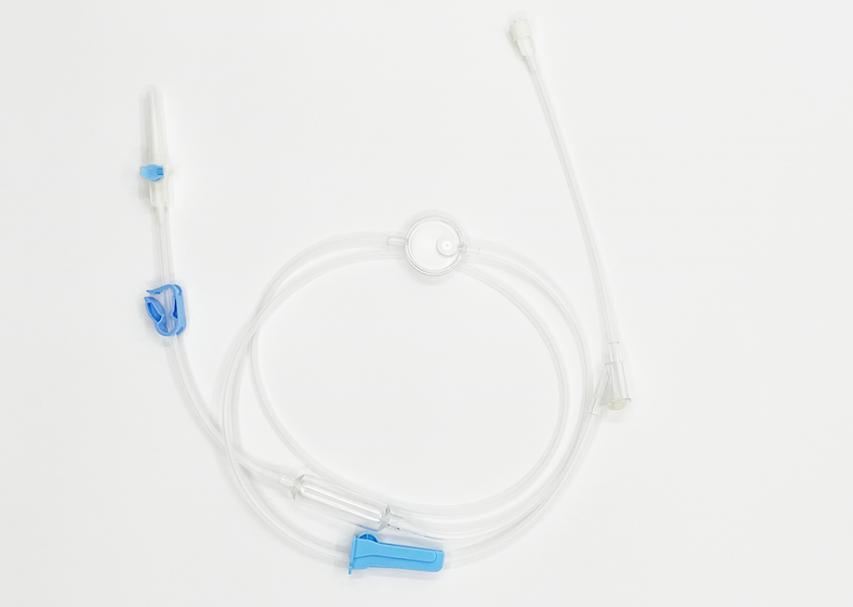
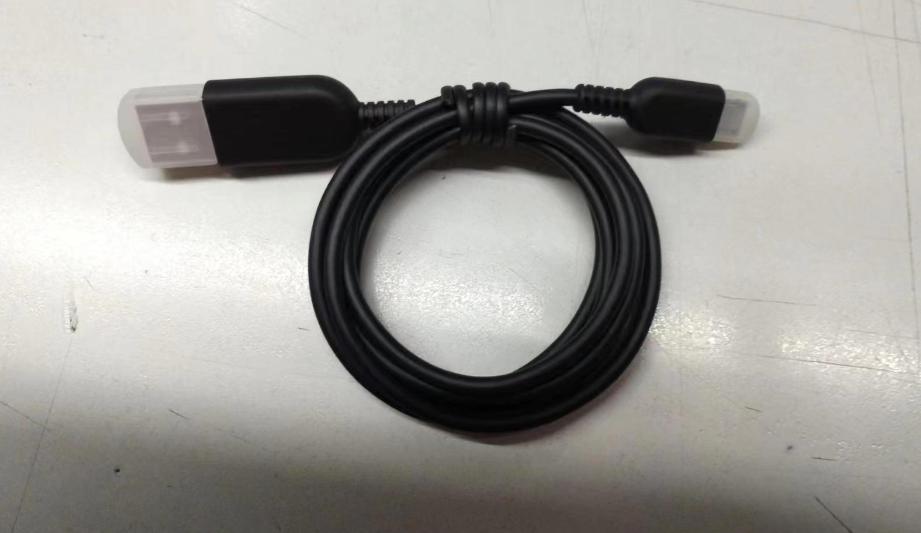
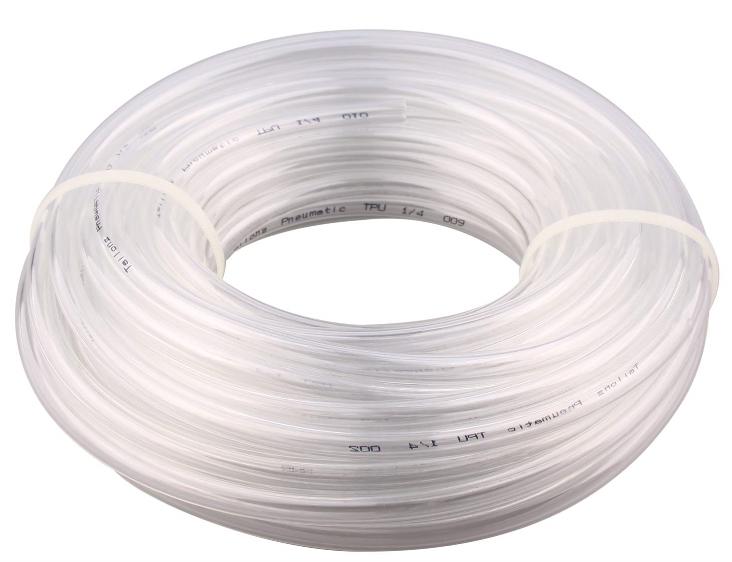
Another important process is extrusion blow molding in which air is blown into the mold to create the desired shape when molten plastic is extruded into a mold. Extrusion blow molding used to produce even complex hollow parts such as shoe cushion, car anti vibration part, bottles and containers.
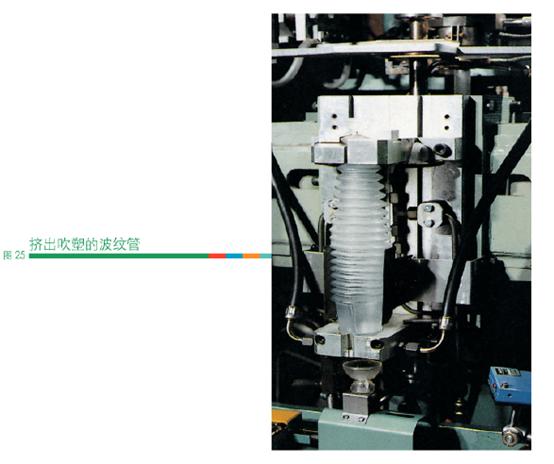
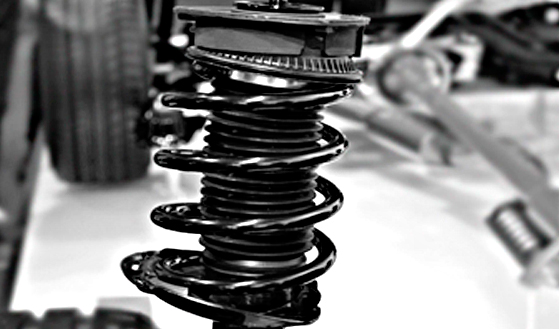
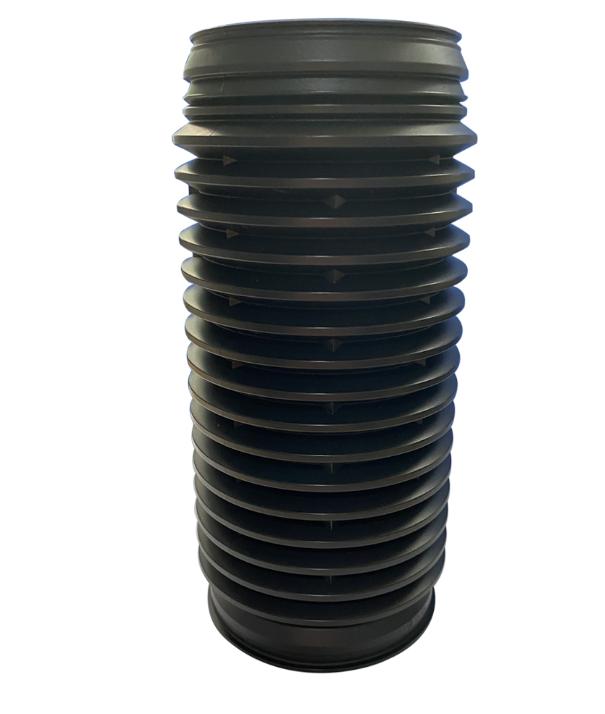
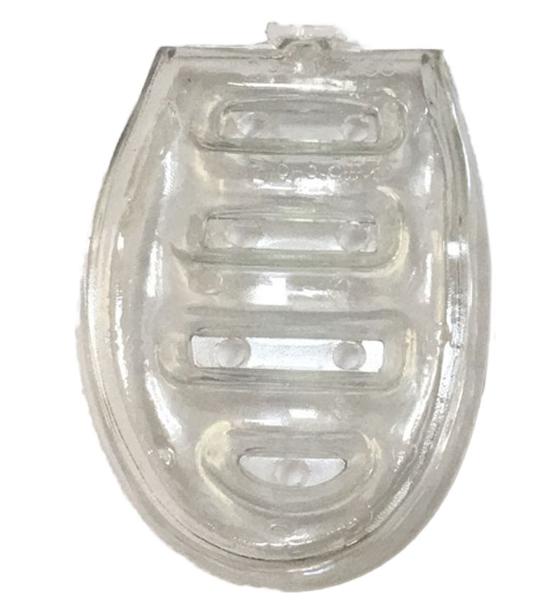
Calendering is a method often used for coatings applications. It is widely used as a means of coating Synthetic Leather and fabric. Calendering grade TPU features with no sticky on roller, low torque, workable for embossing, excellent adhesion and chemical resistance. TPU Calendering synthetic Leather is mainly for sofa seat, wall decoration, sports mat, luggage, car interior, and ship seat. Koslen grade B-785AL and S-670AL are widely used in Calendering process.
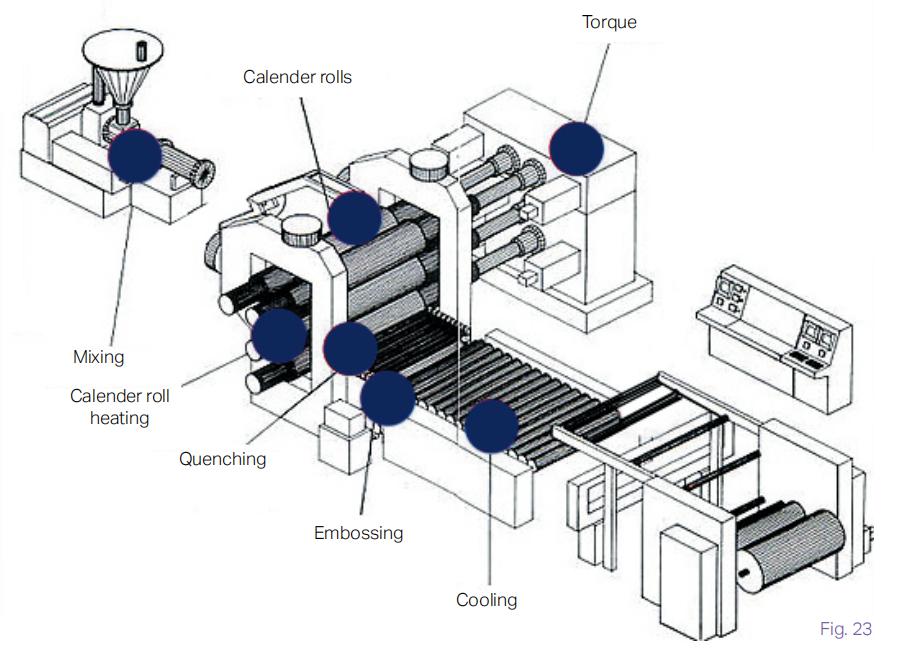
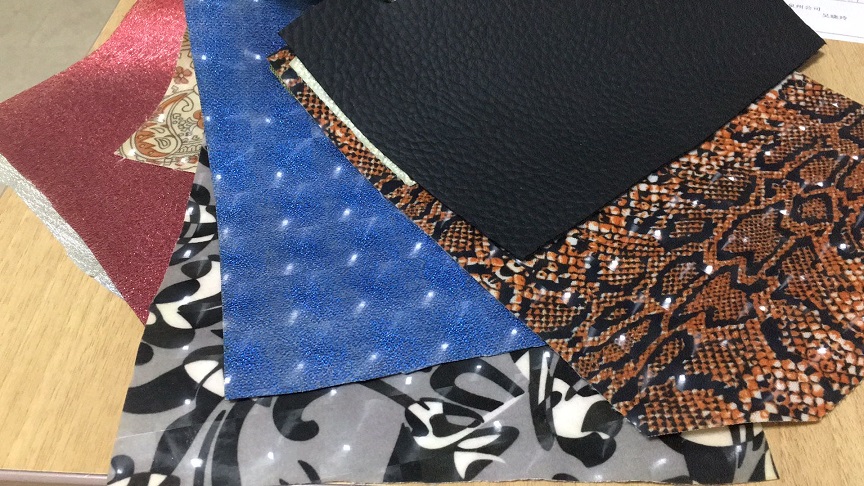
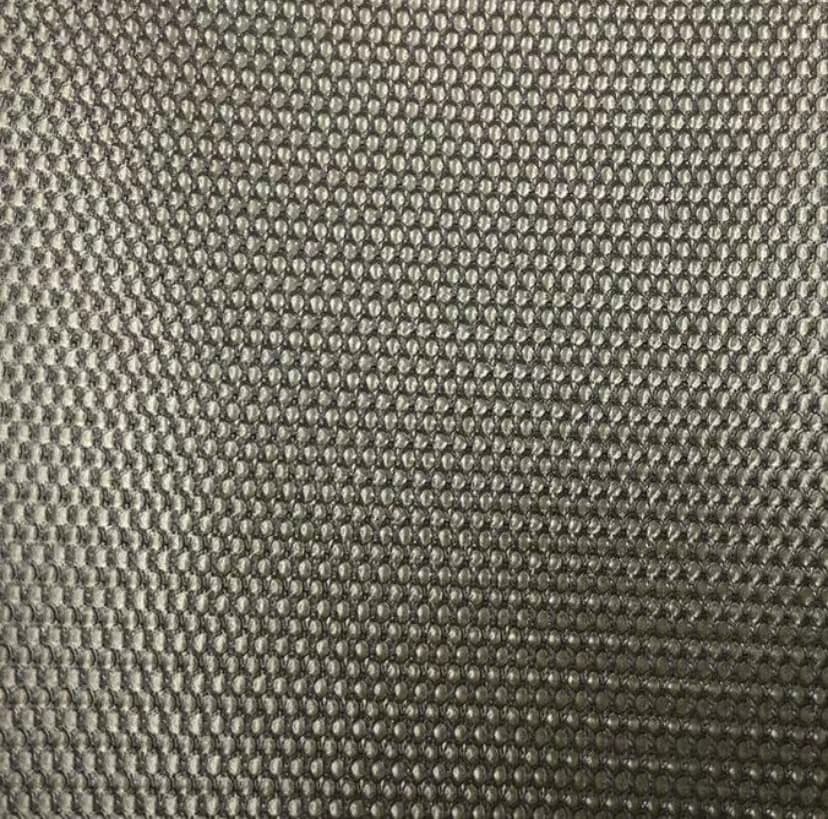
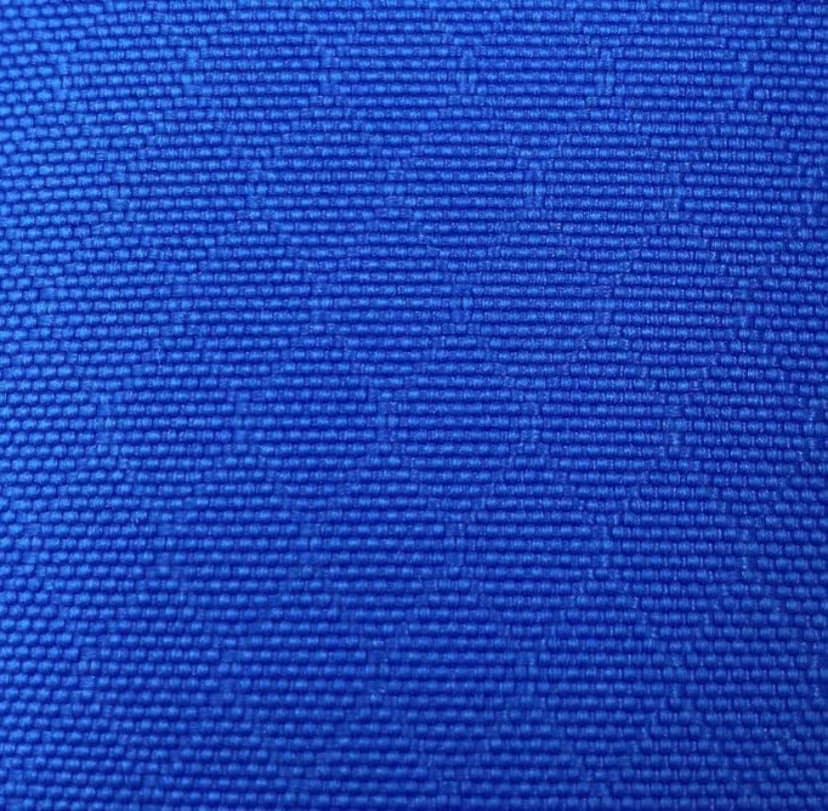
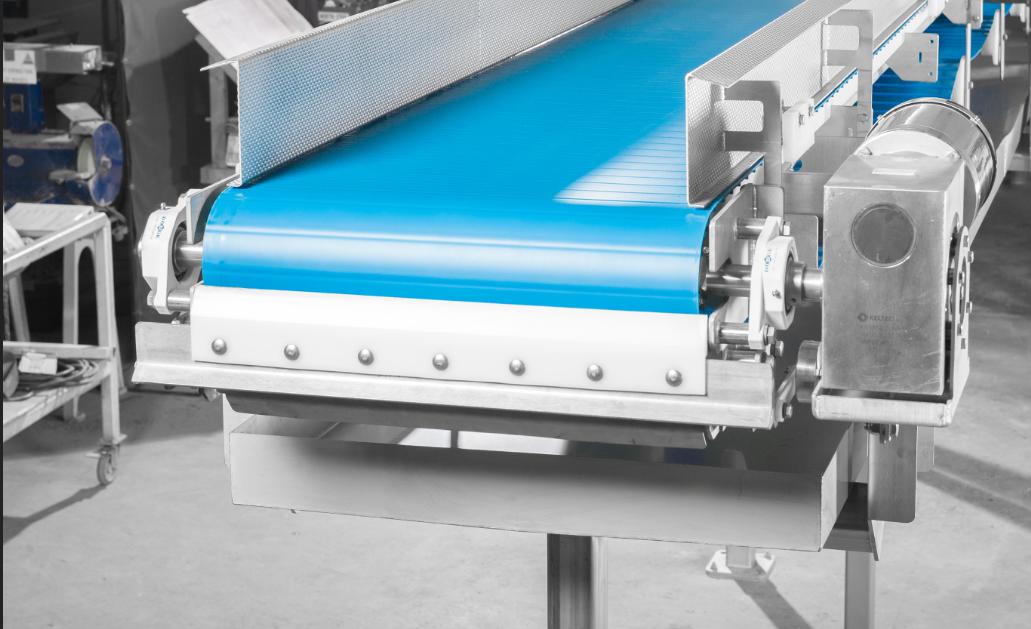
Thermoplastic polyurethanes (TPU) resin are durable, flexible and versatile plastic material. It is widely used in many industry
Golf frisbee is a game that combines the elements of golf and frisbee. The goal is to throw the frisbee from one tee box to another in as few throws as possible. The player with the lowest score at the end of the round wins.
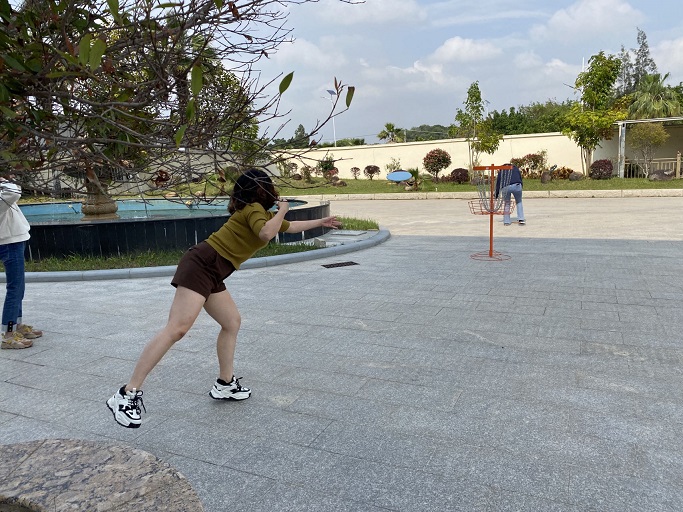
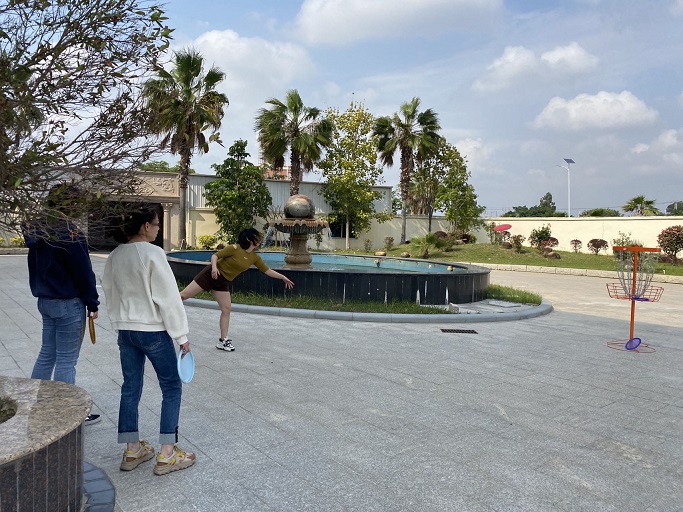
As Golf frisbee is an outdoor activities, so golf frisbee discs must be resistant to UV rays and withstand wear and tear from regular use. Plus the golf frisbee discs must also be lightweight and Flexible to be throw and catch easily and accurately.
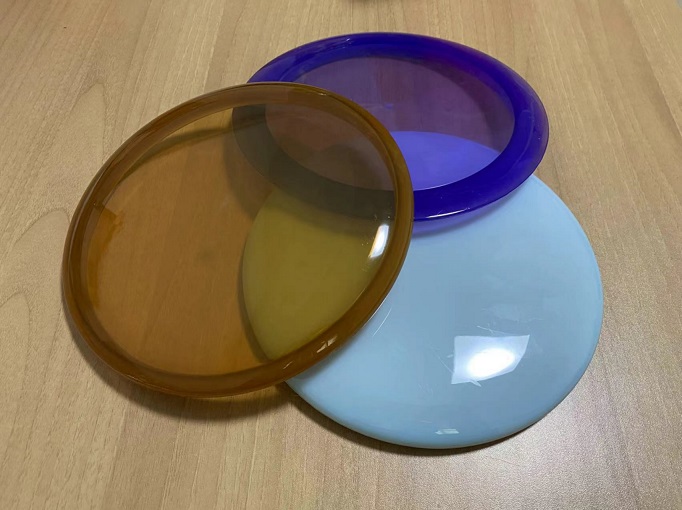
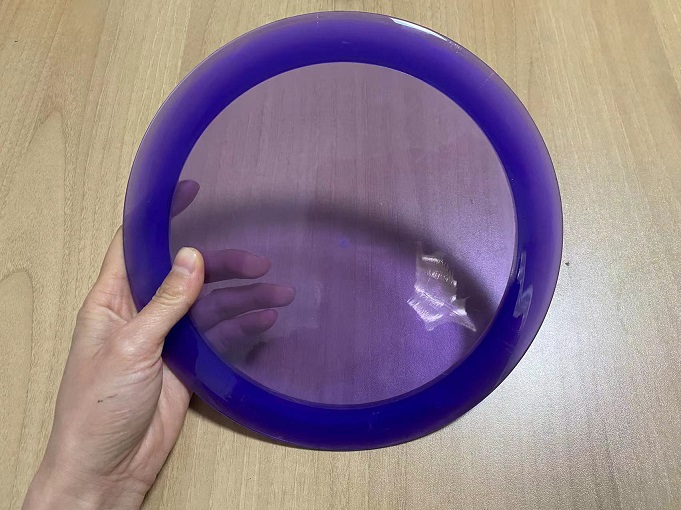
Golf Frisbee discs are typically made of plastic, such as polyethylene and thermoplastic polyurethane (TPU) resin. The most common type of resin used in the production of golf frisbee discs is TPU resin that is known for its flexibility, durability, and strength. TPU golf Frisbee discs are also resistant to abrasion, UV rays, and water.
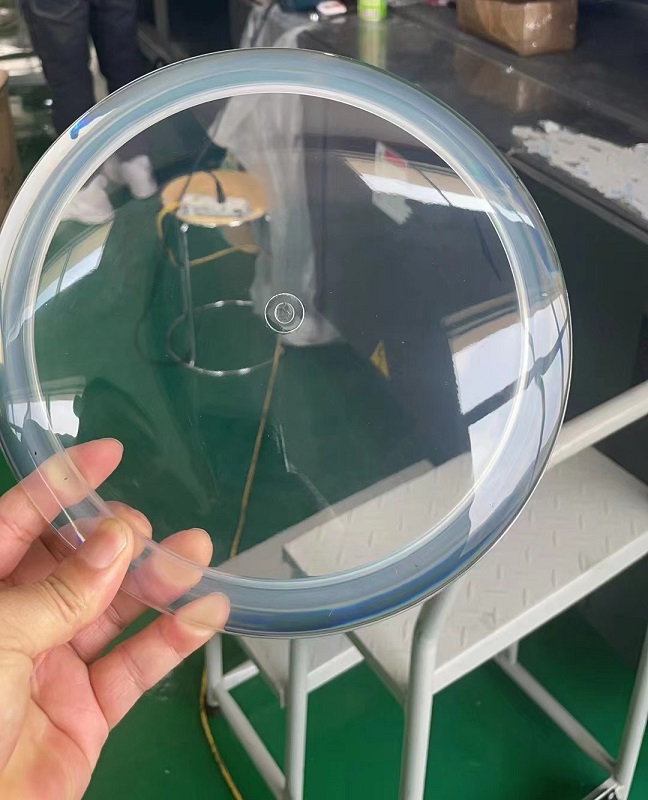
- Bismaleimide Series2
- Cross-Linking agent / Vulcanizing Agent1
- Curing Agent1
- Engineering Plastic Pellets4
- Epoxy Resin2
- Ethylene-VinylAlcohol Copolymer(EVOH)1
- Fish Oil1
- Food Additives3
- Glucosamine1
- Heat-resistant modifier series1
- High Assay Quaternary Ammonium Compounds9
- Low Assay Quaternary Ammonium Compounds13
- Modified Polyvinyl Alcohol1
- Monomalemide Series2
- Other Surfactants/Catalysts8
- Plastic Random Packing1
- Plastic Structured Packing1
- Polyacrylamide1
- Polyurethane Resin2
- Polyvinyl Alcohol (PVA)2
- Power Coatings3
- Quaternary Ammonium Hydroxide4
- Special Quaternary Ammonium Compounds7
- TPU4
- Tertiary Amines1
- UV Ink1
- VAE Emulsion (Vinyl Acetate–ethylene Copolymer Emulsion)1
- aluminum paste1
- antiform2
- fire sleeve2
- resin2
